ALLEKO/iStock/GettyImages
Venison is a leaner alternative to other red meats, especially when it's from a wild rather than farm-raised source. The animal's muscles get more of a workout in his natural environment, so the meat tends to be firmer and less marbled with fat. That means lower saturated fat, cholesterol and calories, but also means less moist, tender meat. Braising, a slow, wet-heat cooking method well suited to tough cuts, is an easy way to prepare venison without it turning out dry and chewy. It works well whether you have smaller venison cuts such as chops or steaks, or larger cuts such as loin, shoulder or other roasts.
Preheat the oven to 350 degrees Fahrenheit. Most ovens need at least 20 minutes to get this hot, so turn it on before you start cooking.
Pat all sides of the venison with salt, pepper and any other dried herbs and spices you want to use. Your favorite curry powder or chili pepper powder are good options for a spicy preparation, or thyme, tarragon, basil and sage all complement venison nicely.
Place an oven- and stove-safe casserole-style pot, such as a Dutch oven, on a burner over medium-high heat. Coat the bottom with a thick layer of cooking oil and wait for the oil to become shimmering hot.
Place the venison steaks, chops or roast in the pot. Sear each side for 2 to 3 minutes, turning with tongs, to give it a golden-brown appearance and some crispness. Remove and reserve the venison on a plate.
Deglaze the pot by adding braising liquid -- wine, beer or broth are standard picks -- and forcefully scraping up the caramelized, flavorful stuff stuck to the bottom with a cooking spoon or spatula. The braising liquid quantity varies depending on what venison cut you're preparing; you need to submerse the meat approximately halfway with the liquid when it goes back in the pot, but you don't want it covered more than that.
Add any desired herbs, spices, aromatics and vegetables into the pot to taste. Use more of anything you seasoned the venison with before searing it, along with other complementary flavoring agents. Mashed garlic or shallot cloves, leeks or scallions work well. Mirepoix, which is a combination of chopped onion, celery and carrots, is commonly included in braised dishes. Pieces of chopped potato or sweet potato, tomato, green beans, beans or other additions can go in the pot, too, for a more stew-like preparation.
Put the venison back into the pot and bring the liquid to a boil. Turn off the burner, place the lid on the pot and transfer it to the oven. Stir the ingredients and turn the meat every half hour or so to encourage even cooking.
Braise the venison until it's falling-apart tender and cooked to 160 F, as measured in the center of the meat with an instant-read thermometer. Thin cuts may only need about 45 minutes to an hour, while larger and thicker cuts usually need around 1 1/2 hours.
Related Articles
How to Cook Venison and Make It Tender
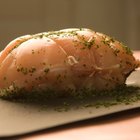
How to Braise Pork

How to Cook a Deer Neck Roast in a Slow ...

How to Cook Beef Shoulder Muscle
How to Use Vinegar to Cook Pot Roast

How to Cook Venison Medallions

How to Cook Center Cut Chuck Steak

How to Make a Blackbuck Antelope Roast
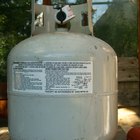
How to Barbeque a Brisket on a Gas Grill

How to Cook Venison Chop on a Grill
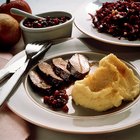
How to Make a Venison Rub
How to Cook Boneless Pork Loin Strips
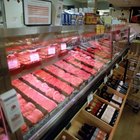
How to Cook Pork Hamonado

How to Cook the Neck of a Deer

How to Cook With Pork Jowl

How to Cook a Deer Brisket
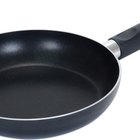
How to Cook Beef Top Round Pot Roast

How to Cook a Petite Filet of Beef in ...
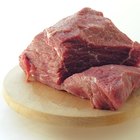
How to Braise an Eye of Round
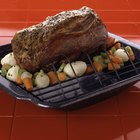
Different Ways to Cook Chuck Roast Beef
References
Tips
- Properly slaughtered, handled and stored venison is essential for meat quality and safety. If you hunt your own venison, learn the appropriate techniques for working with game. When purchasing venison, acquire it from a reputable professional provider.
Writer Bio
Eric Mohrman is a food and drink, travel, and lifestyle writer living in Orlando, Florida. He has professional experience to complement his love of cooking and eating, having worked for 10 years both front- and back-of-house in casual and fine dining restaurants. He has written print and web pieces on food and drink topics for Visit Florida, Orlando Style Magazine, CrushBrew Magazine, Agent Magazine, Dollar Stretcher Magazine, The 863 Magazine and other publications.